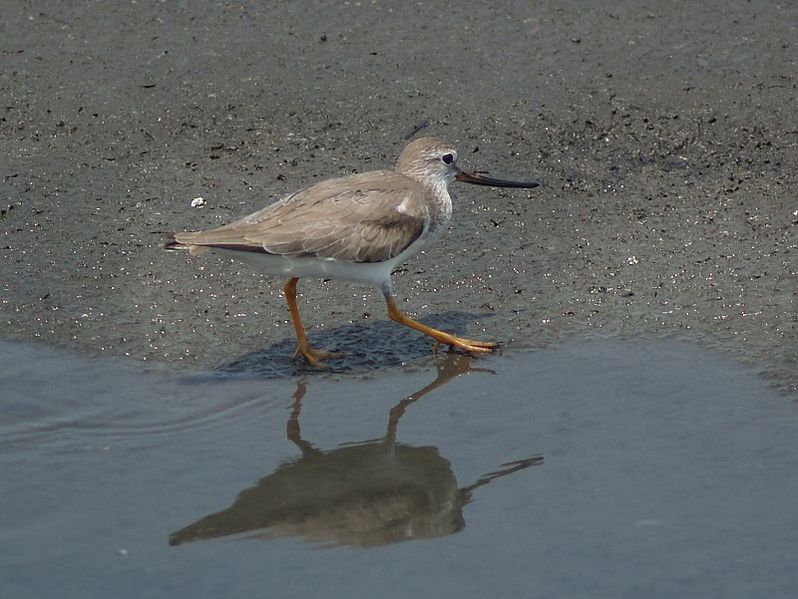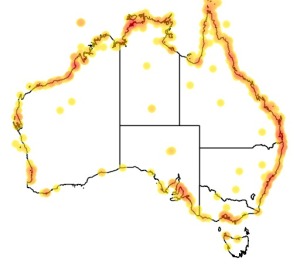Colours
Distinguishing features
Its long upcurved bill – somewhat reminiscent of an Avocet's, but not as strongly curved – makes it very distinctive. As the scientific specific name implies, this wader has a grey back, face and breast in all plumages; a white eyebrow may appear more or less distinct. The belly is whitish and the feet yellow; the bill has a yellowish base, with the rest being black. (Wikipedia)
Size
- From 22 cm to 25 cm (Length of specimen)
Wingspan
- From 46 cm to 48 cm
Synonyms
Distribution
Distribution and habitat preferences
This bird breeds near water in the taiga from Finland through northern Siberia to the Kolyma River, and migrate south in winter to tropical coasts in east Africa, south Asia and Australia, usually preferring muddy areas. It is a rare vagrant in western Europe, and particularly in autumn it is sometimes seen passing through the Marianas on migration; on Palau, further off its usual migration route, it is decidedly uncommon on the other hand. Almost annually and apparently more and more often in recent times, a few birds stray to Alaska and the Aleutian and Pribilof Islands. Every few years, individual vagrants are recorded in the Neotropics, where they arrive either as migrating birds from Africa, or as North American strays accompanying local waders south for winter. Such vagrants have been recorded as far south as Argentina.
It is found on beaches and mudflats but is rare inland. (Wikipedia)
Diet
It feeds in a distinctive and very active way, chasing insects and other mobile prey, and sometimes then running to the water's edge to wash its catch. (Wikipedia)



